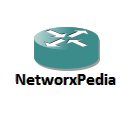Network-Based Application Recognition (NBAR)
Ø
Cisco Content Networking is an intelligent
network architecture that dynamically recognizes internet business applications
and engages network services to achieve end-to-end security, performance and
availability.
Ø
This architecture has three components:
-
Intelligent network classification and network
services delivered through Cisco IOS software.
-
Intelligent network devices that integrate
internet business applications with network service.
-
An intelligent policy management framework for
configuration, monitoring and accounting.
Network-Based Application Recognition Overview:
Ø
NBAR , a feature first available in Cisco IOS
software Release 12.0(5)XE2, provides intelligent network classification for
network infrastructure.
Ø
NBAR is a classification engine that can
recognize a wide variety of applications, including web-based applications and
client/server application that dynamically assign TCP or UDP port numbers.
Ø
NBAR currently works with QoS feature to help
ensure that the network bandwidth.
Ø
These feature include the ability to
-
guarantee bandwidth to critical applications
-
limit
bandwidth to other applications
-
Drop selective packets to avoid congestion
Features
at a Glance::
Ø
NBAR supports a wide range of network protocols
, including some of these stateful protocols that were difficult to classify
before NBAR:
-
HTTP classification by URL
-
Oracle SQL*Net
-
Sun RPC
-
FTP
-
TFTP and more.
Ø
NBAR also classifies traditional static port
protocols for supporting a wide range of solutions.
Ø Support
for new protocols can be easily and quickly added using packet description
language modulus (PDLMs) from Cisco systems.
Ø PDLM
contain the rules used by NBAR to recognize an application.
Ø After
applications are intelligently classified, the network can apply the following
QoS features:
-
Guaranteed bandwidth with class-based
weighted fair queuing (CBWFQ)
-
Enforce bandwidth limits using policing.
-
Making for differentiated service downstream.
-
Drop policy to avoid congestion.
Protocol Supported by NBAR::
1
1) Non-UDP
and Non-TCP Protocols:
-
EGP (8)
-
EIGRP (88)
-
GRE (47)
-
ICMP (1)
-
IPsec (50,51)
-
2) TCP
and UDP static port Protocols:
-
BGP (179)
-
DHCP/BOOTP(67,68)
-
DNS
-
HTTP
-
HTTPS
-
Kerberos (88,749)
-
LDAP (389)
-
NTP (123)
-
POP3
-
RIP
-
SMTP
-
SNMP (161,162)
-
SSH
-
Syslog (514)
-
Telnet
Configure NBAR::
Ø To
configure NBAR, perform the tasks described in the following sections:
-
Configure a traffic class (Required)
-
Configure a Traffic policy (Required)
-
Attaching a traffic policy to an interface
(Required)
-
Verifying Traffic policy configuration
(Optional)
-
Monitoring and Maintaining NBAR (Optional)
Ø You
must enable Cisco Express Forwarding (CEF) on the router prior to configuring
the NBAR feature.
1) Configuring
a Traffic Class:
Router
(config)# class-map [match-all | match-any] <class-name>
Router
(config-cmap)# match protocol <protocol-name>
2) Configure
a Traffic Policy:
Router
(config)# policy-map <policy-name>
Router
(config-pmap)# class <class-name>
Router
(config-pmap-c)#
3) Attaching
a traffic policy to an interface:
Router
(config-if)# service-policy [output|input] <policy-map-name>
4) Verifying
Traffic Policy Configuration:
Show
class-map
Show
class-map <class-name>
Show
policy-map
Show
policy-map <policy-map-name>
Show
policy-map interface
Show policy-map
<interface-spec>
Monitoring and Maintaining NBAR:
Ø NBAR
can determine which protocols and applications are currently running on a
network.
Ø NBAR
includes the Protocol Discovery feature that provides an easy way of
discovering application protocols operating on an interface so that appropriate
QoS policies can developed and applied.
Ø With
protocols discovery, you can discover any protocol traffic supported by NBAR
and obtain statistics associated with that protocol.
·
Displays the TCP/UDP port number used by NBAR to
classify a given protocols.
# show ip nbar port-map [protocol-name]
·
Display the statistics for all interface on
which protocol Discovery is enabled.
# show ip nbar protocol-discovery
EXAMPLE:
Router(config)# class-map
CLASS
Route(config-cmap)# match
protocol icmp
Router(config)# policy-map
CLASS1
Router(config-pmap)# class
CLASS
Router(Config-pmap-c)# drop
Router(config)# int fa0/0
Router(config-if)#
service-policy output CLASS1
Router (config-if)# ip nbar
protocol-discovery
0 responses to “Network-Based Application Recognition (NBAR) ”

